Connectivity in the Yucatan Penninsula,
and its impact in Tulum Real Estate
- Por Jorge Raya
- Aug 30 2021
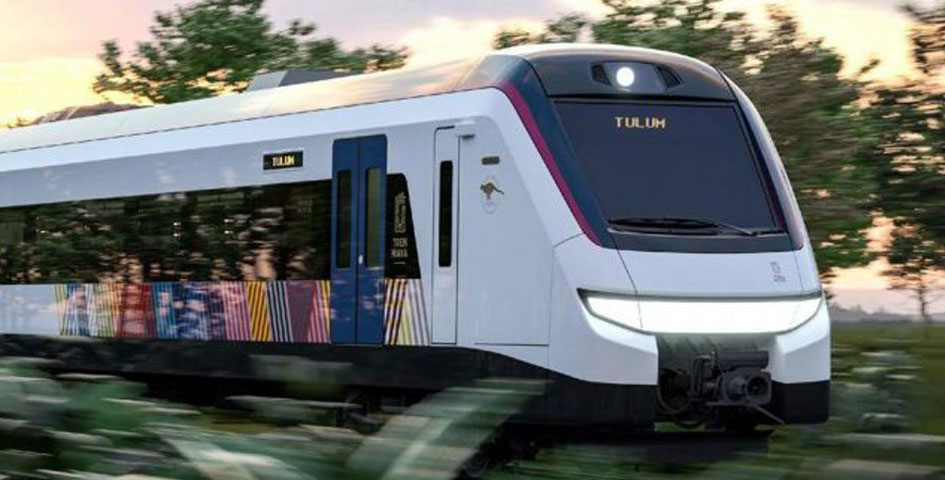
The Mayan Train
Sightseeing
The southeast of Mexico has an extensive offer of tourist attractions: beaches with crystal clear water, archaeological sites, some of them declared World Heritage Sites, cenotes, underground rivers, Magical Towns, cultural destinations, among others. However, not all tourist destinations are fully developed, and their full potential reached, moreover many communities remain marginalized. Every year more than 17 million tourists arrive in the area, contributing with a hefty economic income and creating formal jobs that promote the development of the localities. Yet, prosperity has not reached everyone. Currently, 83% of foreign tourists limit their stay to the Quintana Roo area and, within the state, the vast majority of visitors prefer to stay in Cancun and the Riviera Maya. Like the problem of integration of local communities, the lag in connectivity has limited the alternatives available for tourists in the region to visit destinations or attractions in optimal conditions of time, cost, and safety.
The Mayan Train intends to increase the number of visitors and the average stay in the region in those destinations that have the potential to make full use of their tourist attractions sustainably. The economic income from foreign tourism in the southeast is concentrated in the Cancun-Riviera Maya area, leaving the other four states in the region out of direct economic benefits.
The route
The nearly 1,500 kilometers will connect regions of the Yucatan peninsula, from its large tourist centers to its rural communities. This will provide opportunities for trade and social development that will benefit the local population and companies as well as national and international tourism. The Mayan Train has as its route a great circuit that surrounds the Yucatan peninsula having stations in cities such as Palenque in Tabasco, Escárcega in Campeche, Mérida, Cancun, Playa del Carmen, Tulum, Felipe Carrillo Puerto, Bacalar and Chetumal to name just a few. In total, there will be 19 stations with several trains traveling the roundtrip route.
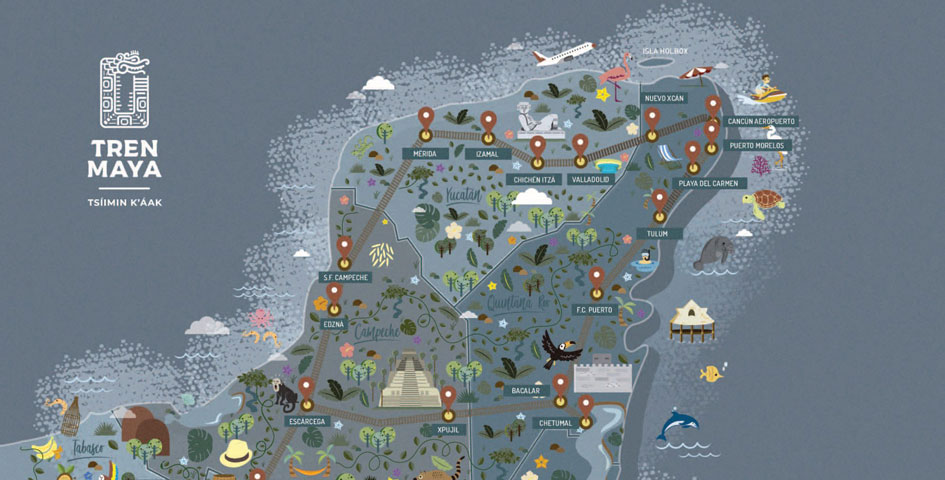
Electric, diesel, and hybrids
In its initial phase, the Mayan Train will operate with a hybrid energy scheme. This means that in the portions where there is electricity, the train will move through its electric motors, and when there isn't electrical power, it will run on diesel engines. The sections corresponding to the Mérida-Cancún-Chetumal route will be electrified. This represents 690 kilometers of route, including double lanes for multiple services. The design for these stretches of higher anticipated demand was modified to incorporate electric traction in the vehicles and the railway infrastructure. For the rest of the route, there is the possibility of electrification in the future.
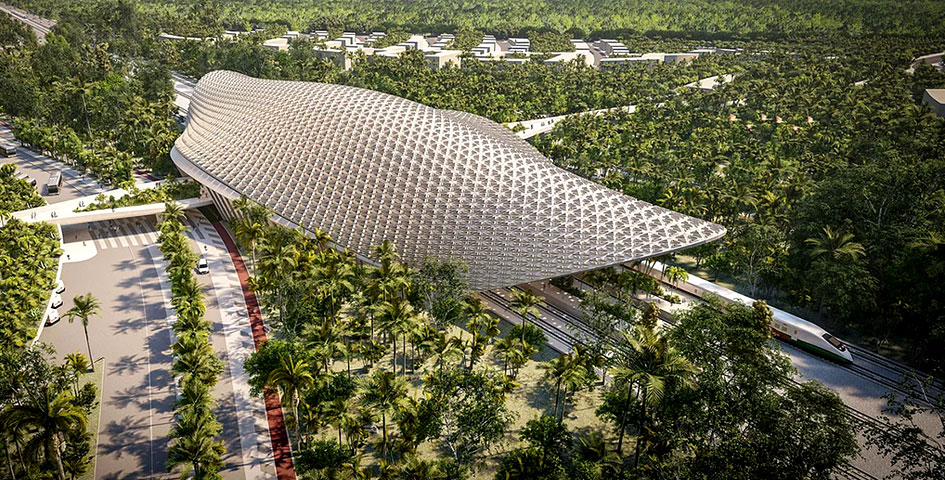
Added Benefits
This mega project aims to detonate the agricultural industry that suffers from a lack of connectivity. Producers, large and small, will be able to move their goods safely and cheaper than through the highway system and thereby obtain better profits for their work.
This is just a glimpse of what this mega project of the Mayan Train is. And it will undoubtedly contribute to increasing the value of the real estate in the region.
The Roads
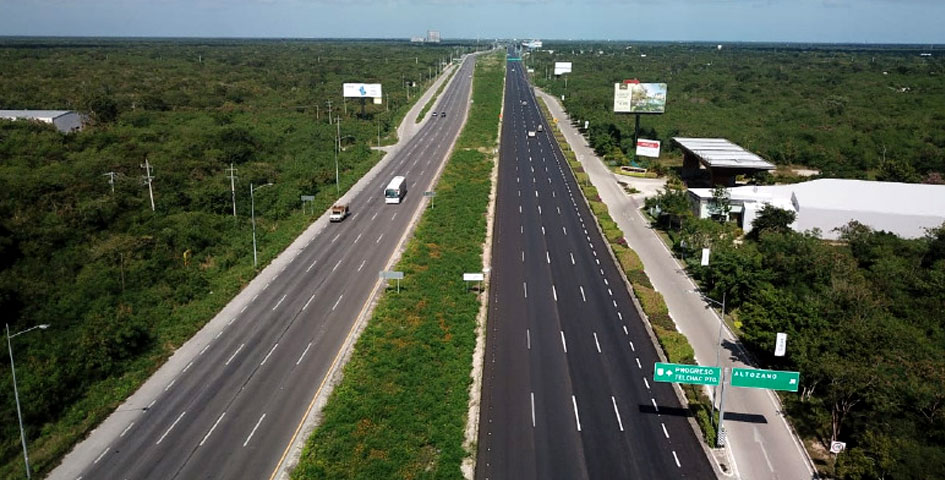
In ancient times they said that all roads led to Rome since it was the center of one of the greatest empires in history, and any need that might arise, could surely be solved in Rome. Today, roads and highways practically connect the world. You can get into a car and, assuming you have the necessary resources for fuel, maintenance, and repairs, you can practically travel the entire world. Of course, there will be paths that are more "paths" than others. In other words, there are highways, but there are also dirt roads. It all depends on how far away from civilization you want to go.
The Yucatán peninsula comprises three of the thirty-two states of the Mexican Republic: Quintana Roo, Yucatán, and Campeche and it can be said that they are states that are very well connected, with a good quality road network that not only bind the large economic poles such as Cancun, Playa del Carmen, Tulum, Mérida or Ciudad del Carmen but also the hundreds of towns inland. Traditional communities that one can visit and for whom time has connected with the rest of the world with simple roads but in good condition.
“...it can be said that they are states that are very well connected, with a good quality road network that not only bind the large economic poles...”
For large cities, there are four-lane highways, some of which are toll roads that allow the fast and safe transfer of passengers and merchandise, but there are also "Federal" or free highways that allow us to visit countless towns and communities that mostly have that firewood and delicious food cooked on the stove flavor. . We highly recommend to take the time and travel these "free" roads and visit all these corners of which the peninsula has many and varied.
Of course, each community has laid speed bumps so that vehicles do not cross the town at full speed and thus avoid accidents, so it is worth considering that the trip takes a little longer. However, each cap is a pretext for a vendor to come up and offer you some locally made merchandise. From plants to fresh bread, from honey to juicy and delicious fruit grown right there. It is a treat for the senses and a gift to meet with the vendors, who are mostly children.
The road unites communities, but it also allows us to get to know this wonderful region up close, which is, without a doubt, a corner of paradise.
Cancun International Airport
and the upcoming Tulum Airport

Today the Cancun airport has a new operational record. With 545 total flights in a single day (inbound and outbound), it is the highest number since the start of the pandemic.
This airport is the second most important in all of Mexico, being surpassed only by Mexico City. However, during July 2021, it had total traffic of 2.09 million people, which places it as one of the most congested in the world. It also serves the airport needs of more than 50 airlines around the world and connects the Mexican Caribbean with cities in other countries such as:
| Atlanta | Hartford | Panama |
| Austin | Baltimore | Houston |
| Barcelona | Indianapolis | Phoenix |
| Bogota | Kansas | Pittsburg |
| Boston | Las Vegas | Raleigh |
| Brasilia | Lima | Sacramento |
| Calgary | Lisbon | Salt Lake City |
| Caracas | London | San Antonio |
| Charlotte | Los Angeles | San Francisco |
| Chicago | Madrid | San Jose |
| Cincinnati | Memphis | St. Louis |
| Cleveland | Miami | Seattle |
| Columbus | Minneapolis | Tampa |
| Dallas | Montreal | Toronto |
| Denver | Moscow | Valencia |
| Detroit | Nashville | Washington |
| Istanbul | New Orleans | Zurich |
| Philadelphia | New York | Paris |
| Frankfurt | Orlando |
“However, the most significant thing about Cancun International Airport is its ability to connect us with the world.”
The Cancún Int'l Airport has four terminals of which only three are in operation. Inside there are not only the counters for passenger documentation and baggage reception, there is much more. To begin with, there is a generous space for the Duty-Free shops to which you only have access when you leave and not when you arrive. These stores are as varied as there can be and include the following brands:
| Aerotiendas | Handcraft Air Shop | Tiendas Duty Free |
| Pineda Covalin | Sunglass Island | Joyería Sofía |
| Aircraft Silver | Hard Rock Café | T-Shirts |
| Spa | Tabaquería | Ocean |
| Cinco Soles | Cenca | Blue Value Drugs |
| Sr. Froggs | Inter Sew Shop | Oprendi |
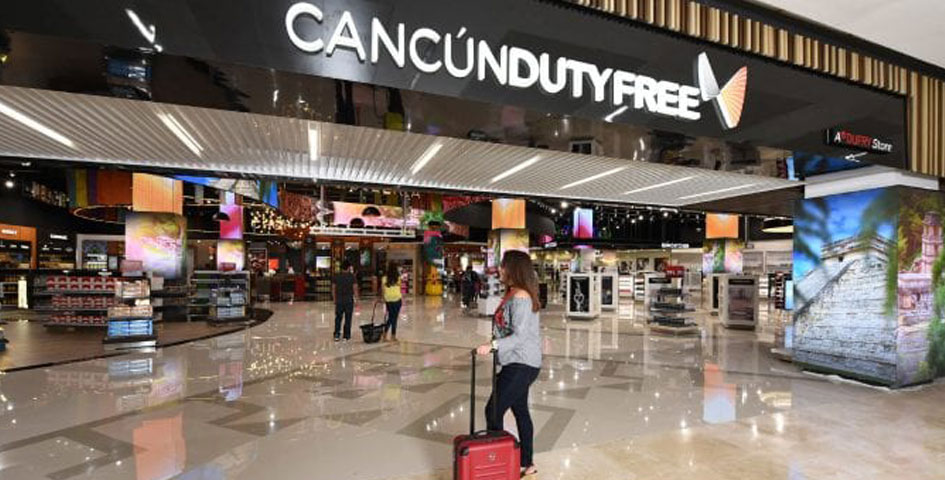
However, the most significant thing about Cancun International Airport is its ability to connect us with the world. Countries that make up the bulk of our yearly tourism, providing an unprecedented economic benefit for the region. In second place would be the cruises, but we will talk about them another time.
Oh, but there is a small problem. The airport is reaching its maximum limit of operations, and the idea of building a new one has gained traction. A third complex to work with the Cancun and Cozumel airports which is to be set in the jewel of the Caribbean; Tulum.
The time has come to make the necessary investment and lower traffic saturation in Cancun. There are several architectural projects, but the time for its construction and the way it would operate have not yet been defined.
What is known is that it would serve approximately 4 million tourists and would be closely linked to the other mega project for the region, the Mayan Train.
At the end of the day, a third airport cannot help but consolidate the Riviera Maya as a world-class destination with all the connectivity required. Both airport terminals are tourist poles that draw investors' interest in acquiring properties in the area, knowing that capital gains and return on investment are guaranteed. If you want to know more about the Real Estate opportunities in the Riviera Maya, be sure to contact us. We will gladly help you find the best investment option.